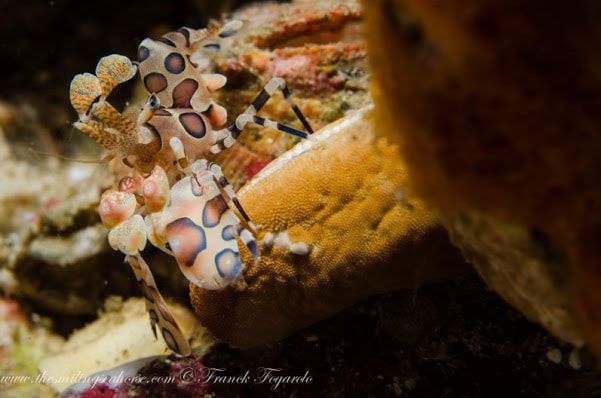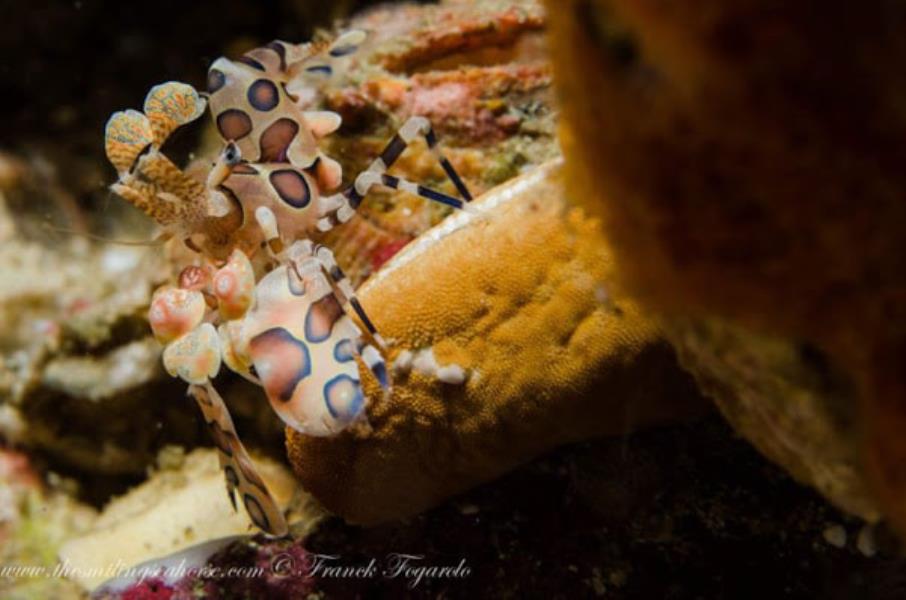-

harlequin2_orig
Harlequin shrimp
Harlequin shrimp can be identified by some distinctive features such as the unique body shape and appendages. Their claws are large and flat, different from all other types of shrimp. Their tail is trapezoidal and they use two fancy flat antennae on their heads with sophisticated scent receptors tuned to detect prey.
How big do harlequin shrimp get
One of the Harlequin Shrimps most attractive feature is their Carnaval-ready costume. Their carapace is cream-colored patterned with large psychedelic spots.
It used to be thought that there were two varieties of harlequin shrimp (Hymenocera elegant and H. Picta) but it was later concluded that they are one and the same with variations in color depending on the region they inhabit.
Can harlequin shrimp change color?
These intricate motifs have developed through evolution as a means of protection. In the underwater world, animals with bright colors are usually recognized by potential predators as toxic. This is true for the harlequin shrimp whose advantage invites far fewer natural predators than other less colored creatures of similar stature.
What do harlequin shrimp eat?
How do harlequin shrimp kill starfish?
A curious harlequin shrimp and starfish relationship
In moments of desperation, the harlequin shrimp will resort to eating the similar soft leg tubes of sea urchins. It is clear that this is not their choice food source as they will only resort to this should the only other option be starvation.
Harlequin shrimps are in danger
Like many other marine creatures, harlequin shrimp are suffering due to the intervention of humans in their environment. Global warming, pollution, coral bleaching events, changes to water chemistry, and fishing to name a few, are factors that threaten this gorgeous species.
The deterioration of coral reefs could have a devastating impact on this species as they will not have the protection to help them develop and thrive. Also with fewer corals come fewer starfish for harlequin shrimp to eat, and thus begins a vicious cycle of doom. Although there are no specific conservation initiatives targeting harlequin shrimp, coral conservation projects can indirectly benefit individuals living on a reef that is well cared for.
In recent years with the growing aquarium trade, these beauties have also become a major target for people wishing to put them on display in their personal fish tanks. When you search the internet for information on harlequin shrimp, the majority of hits are from sites offering information to aquarium breeders and collectors, which is heartbreaking. The appeal is understandable from an aesthetic standpoint, but we would much prefer to observe them happy and free in their natural habitat. We often get the opportunity to spot them tucked away in the reefs while diving Myanmar.
Tags:
-
-
-
-
-
marine lifemarine faunashrimp



Load more comments